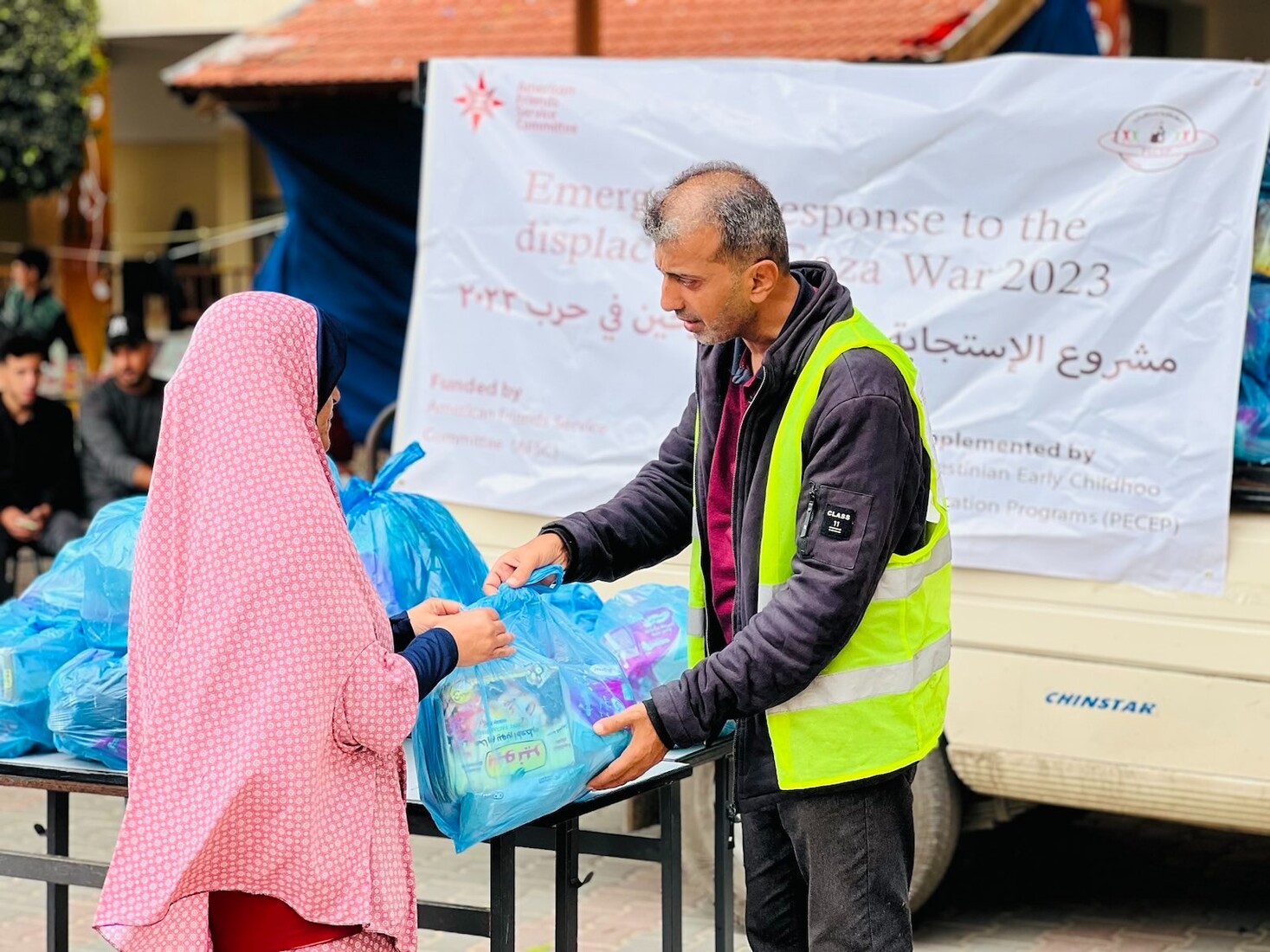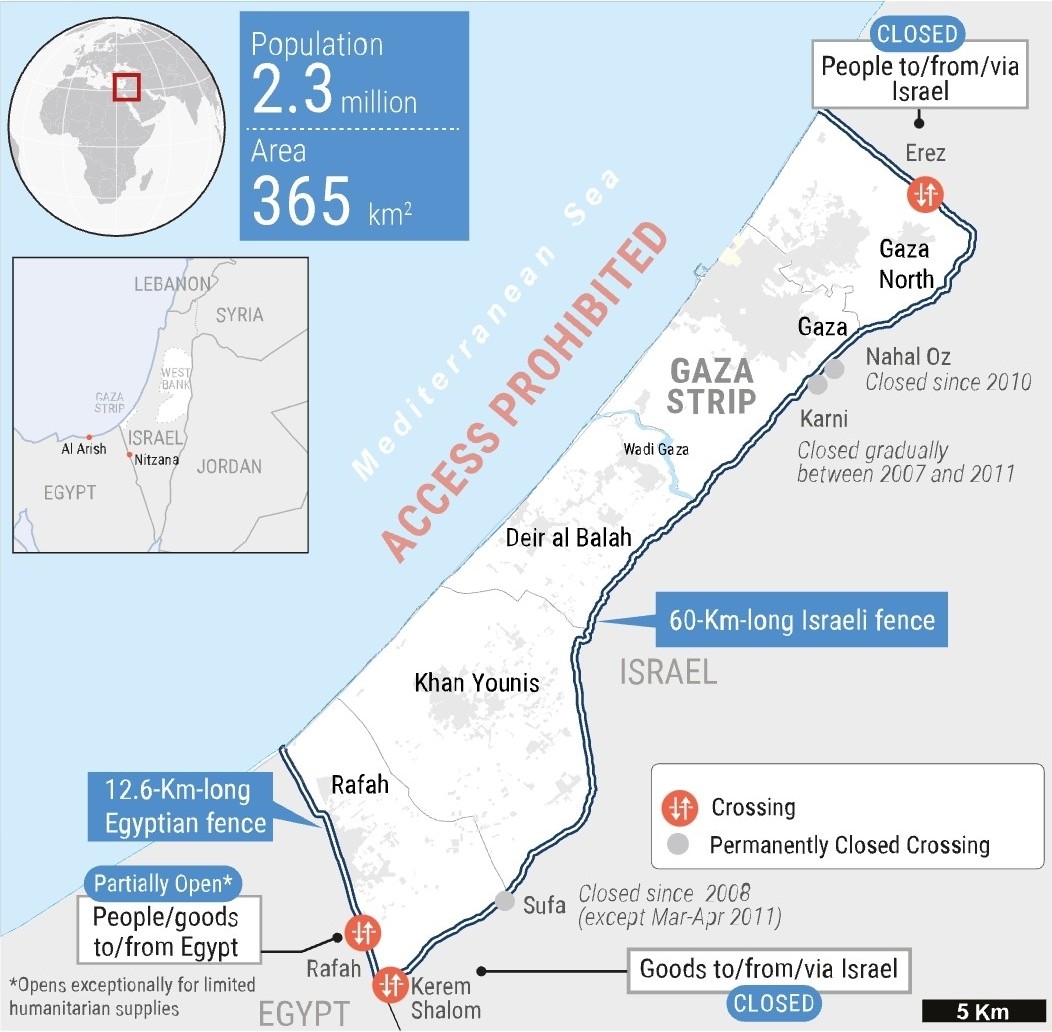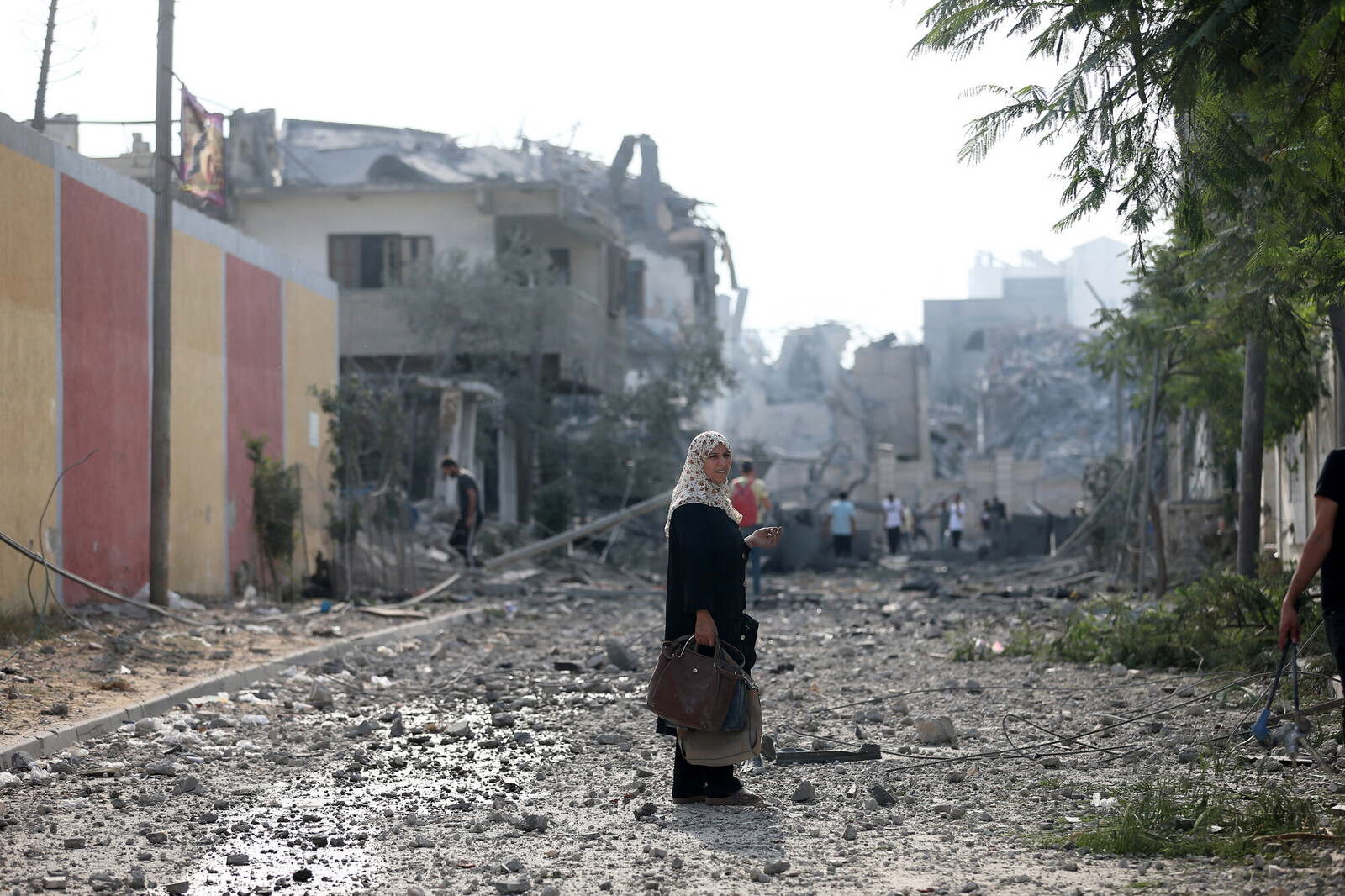
An AFSC staff member distributes food at a shelter in Gaza.
AFSC has offices and staff in Jerusalem, Gaza, the West Bank, and Jordan. Today, we are providing humanitarian relief to Palestinians in Gaza and the West Bank—as we advocate for a permanent cease-fire and protection for the Palestinian people.
Here’s the latest from our Middle East team on the situation facing Palestinians and how AFSC is responding to the crisis.
By the numbers: The human toll in Palestine since Oct. 7
GAZA
- 16,248+ killed
- 7,000+ buried under the rubble
- 43,616+ injured
- 1.93 million displaced
- 4,000+ arrested
- 50,000+ homes destroyed
WEST BANK
- 266 killed
- 3,200 injured
- 1,332+ displaced
- 3,480 arrested
- 180 homes destroyed
Sources: Gaza Ministry of Health, UNOCHA

Source: Government media office, Gaza Ministry of Health
The humanitarian situation in Gaza
The total population of Gaza—2.3 million Palestinians—is in need of urgent humanitarian aid, but the current situation is not sustainable from a humanitarian perspective.
After a temporary cease-fire that lasted for just a week (Nov. 24-Dec. 1, 2023), the Israeli attacks resumed with even more intensity. As stated by the U.N. Office for the Coordination of Humanitarian Affairs, “after two months of hostilities, the situation in Gaza is becoming apocalyptic. As hostilities expand, people are forced into increasingly confined areas of the south, and meaningful humanitarian efforts become nearly impossible.”
Lack of humanitarian access: The only entry point of aid to Gaza is the Rafah border with Egypt. All other entry points are now closed. Israeli authorities control what aid can enter Gaza. Only food, water, medicine, some winterization items, and a limited quantity of fuel have been authorized by Israel to enter Gaza. The aid provided falls far below what is needed. Before Oct. 7, about 500 trucks of aid would enter Gaza daily, which was insufficient. Since Oct. 21, only an average of 100 trucks per day have been allowed to enter daily.
More forced displacement and mobility restrictions: As Israel expands its attacks into the south of Gaza, Palestinians are again being forcibly displaced to Rafah in the southern border with Egypt. Since the resumption of hostilities, the Israeli army has distributed leaflets with a QR code to an online map indicating where aggression will be more intense. But few Palestinians are able to access this map since there is no longer a functioning telecommunications network or internet. In any case, the Israeli army has also bombed all the areas it declared “safe.” There is no safe place in Gaza. And without access to humanitarian aid and shelter, people will be forced to sleep in the open air as winter has already started.
Buildings and infrastructure destroyed: Extensive bombardment has resulted in the destruction and damage of almost all buildings, alongside widespread damage to roads and essential infrastructure such as power systems and distribution networks, and water storage tanks, pipes, supply networks, and drainage channels. This has prevented access to services and infrastructure critical to meet basic needs. Among the destroyed buildings are 275 schools, and 350 education facilities have been damaged. Gaza City—the largest city in the Gaza Strip—has been completely flattened and made uninhabitable. On Oct. 8, Israel bombed a protected building that houses all international organizations in Gaza, including AFSC’s office.
A health system that has collapsed: Out of 36 hospitals, 22 are completely out of service. Operational hospitals are functional with very limited services and face challenges due to bombing, overcrowding, power outages, fuel depletion, and people’s displacement pressure. As of Dec. 3, only four hospitals in the north were partially operating. In the south, only two major hospitals are operating, but at three times their capacity. None of the hospitals in the north can perform surgeries. More than 280 health workers have been killed and 30 health personnel have been detained. More than 55 ambulances are completely out of service.
Rising public health concerns: The lack of medical supplies, clean water, food, and other essential supplies—combined with poor living conditions, severe overcrowding in shelters and the disruption of health, water, and sanitation systems—have increased the risk of communicable diseases. Diarrhea and respiratory conditions have spread. This concern is underscored by recent reports of hepatitis cases at shelters in the south.
Vulnerable groups in difficult conditions: Several groups are especially vulnerable due to the lack of proper shelter, health and basic services. That includes people with disabilities; women who are pregnant, have recently given birth, or are breastfeeding; people who are recovering from injuries or surgeries; seniors; children, especially newborns; and those with compromised immune systems.
Threats to agricultural land for food supply: The extensive damage to agricultural lands throughout the Gaza Strip, especially in North Gaza, represents a substantial threat to both food production and the overall food value chain. Restricted access hampers farmers from reaching and farming their lands, posing an immediate threat to current harvests and food production. Food prices have surged since Oct. 7, according to the World Food Programme. Almost 95% of households in Gaza have inadequate food consumption and are adopting extreme consumption strategies to cope with food shortages.
Arrests in Gaza: As of this report’s writing, the Israeli army has detained, stripped, and chained Palestinian male civilians in the streets of Beit Lahia, in the north of Gaza, and threatened to take them into Israel to undisclosed locations.

At a shelter in Gaza, AFSC and partners organized an open day of activities for children. Mayar Ramlawi
AFSC’s emergency relief efforts
In Gaza, AFSC has provided emergency relief to displaced people in the Khan Yunis and Rafah regions of Gaza. In recent weeks, our staff, working with partners, have so far distributed:
502 food parcels for 3,600 people with easily prepared items such as luncheon meat, canned cheese, and jam that provide enough to feed a family for two days.
770 meals of rice and meat for families, serving 2,370 people.
500 family hygiene kits with items such as soap, shampoo, toothbrushes, toothpaste, hairbrushes, nail clippers, ear cotton, wipes, underwear, women's hygiene products, and other sanitary supplies.
Read more about AFSC’s emergency relief.
In the West Bank, Palestinians are increasingly facing arbitrary killings and detentions, home demolitions, daily Israeli army raids, and other human rights violations. Over 150,000 workers from the West Bank, previously employed in Israel and settlements, have lost their jobs due to firing or restricted crossings. There are also thousands of Gaza patients and workers stranded in the West Bank who have not been allowed to return to Gaza.
In recent weeks, AFSC has supported 168 patients from Gaza and their relatives who were receiving treatment in Jerusalem and were forced to relocate to Ramallah during the war. We assisted patients with medical needs and winterization items. Working with partners, we are now providing patients and their families hot meals daily.
How you can help
Contact Congress today: Urge your representatives to call for a total cease-fire and humanitarian access to Gaza.
Give to AFSC’s Gaza emergency response: Your donation will bring humanitarian relief and support ongoing efforts to stop the violence, address its root causes, and build conditions for peace.
